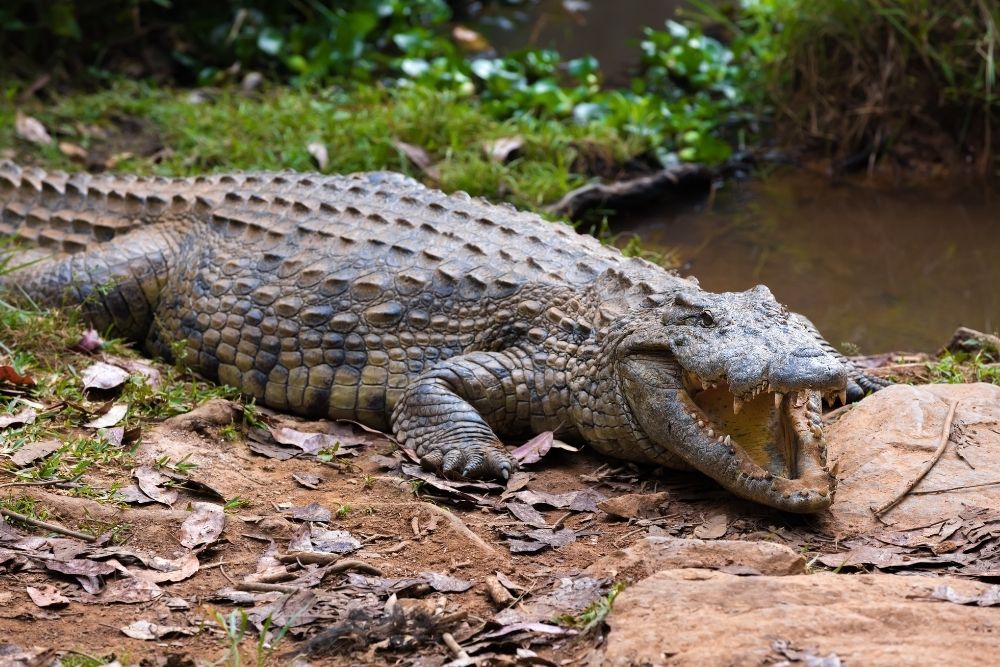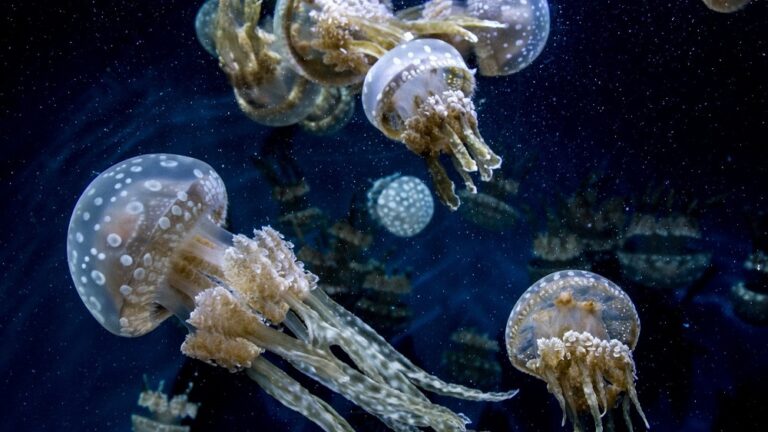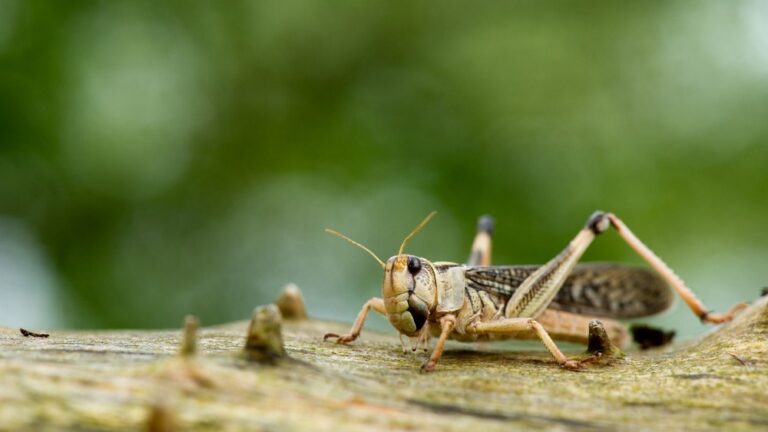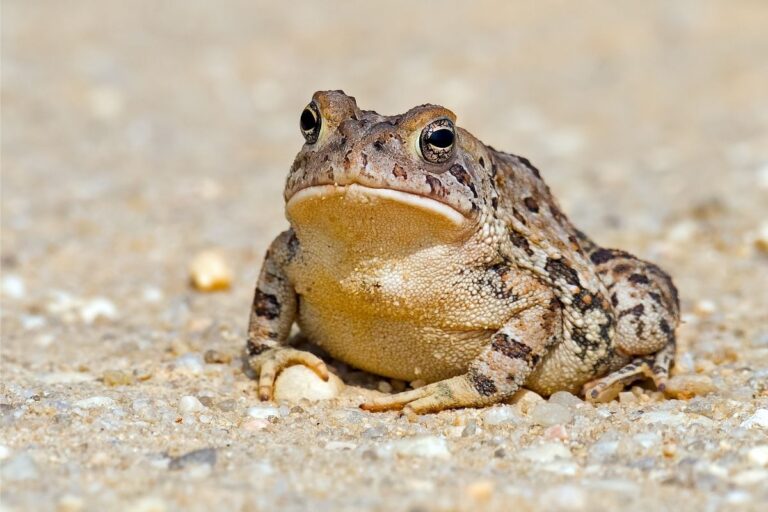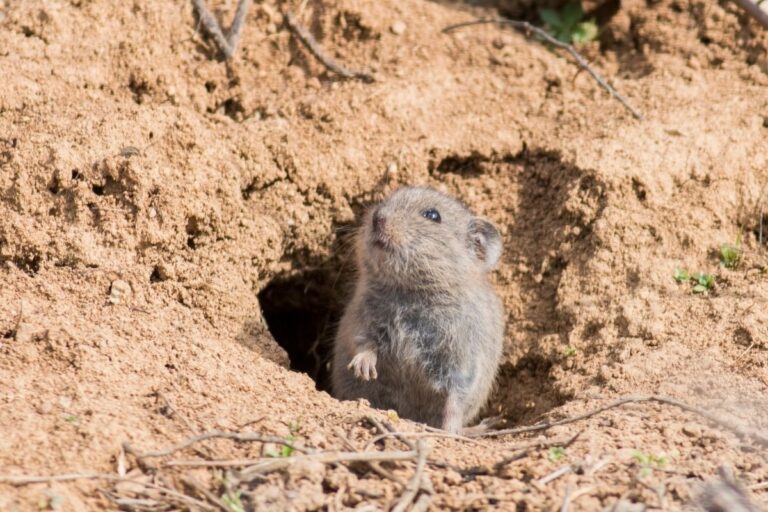Interesting Animal Facts About Crocodiles
Last Updated on February 18, 2022 by
Crocodiles have to be one of the most famous animals in the world.
Their long, pointed snouts, their scaly, bulbous skin, and their large size make them stand out from the other top predators from the animal kingdom, such as wolves, bears, their scaly snake cousins, and the big cats.
These magnificent creatures have been a part of our cultural perception of wild animals for as long as that has been a concept for us.
As a part of that, we have also tried to learn as much as we can about these dangerous, almost ancient-looking, creatures that patrol the rivers and lakes of our world.
And what we’ve learned so far is amazing. And we’re going to show you some of these interesting pieces of information in this article.
Here are just some of the wildest facts that we know about crocodiles!
They’re Big
Let’s get one of the most obvious facts about Crocodiles out of the way: They’re big.
But there’s something special about how big these animals are, especially when you compare them to their other scaly relatives.
Most of the reptiles that you can find in the wild are fairly small. Many species of lizards, turtles, and snakes will range from anywhere from a few centimeters to about a meter in length.
Of course, there are exceptions to these. Some species of the Anaconda can grow up to 5 meters long, there are plenty of monitor lizards that can get pretty large, including the Komodo Dragon, the world’s largest living lizard, at 3 meters in the biggest examples.
And the Galápagos tortoises and Leatherback Sea Turtles are huge in their own right too. But these are usually exceptionally big for their family of animals, and not common around the world.
The crocodile family, meanwhile, are almost all very large reptiles and are some of the biggest meat eaters in their habitat.
The smallest crocodilian, Cuvier’s Dwarf Caiman from South America, for example, can get as large as 1.6 meters. If you want to be picky, and only include species that are ‘true’ crocodiles, the West African Dwarf Crocodile, can get as large as a grown man, up to 1.8 Meters.
And this isn’t even talking about the biggest crocodile of them all. The king of today’s reptiles: The Saltwater Crocodile.
These are not only the biggest crocodiles in the world right now. They are some of the biggest predators that you’ll find on land, period. The largest saltwater crocodile ever caught on record weighed well over a tone, and was a massive 6 meters, about 21 feet long!
To put that into perspective, that’s as long as 2 family cars, pressed bumper-to-bumper, combined!
The most incredible, and probably terrifying, thing about crocodiles, is that they used to be even bigger than that.
One of their ancestors from the Late Cretaceous period, about 70 million years ago, known as Deinosuchus, was an absolute titan in its day, measuring over 10 meters, or 33 feet, long!
Although it would have been an amazing creature to see in real life, perhaps it is best that they don’t get that big anymore, and are happy with just being only 2 big cars long.
They’re Old
Whilst we’re on the subject of their giant ancestors, let’s take a moment to discuss just how old this family of animals is.
We already talked about how some of the largest crocodiles to have ever lived during the late Cretaceous period, which was roughly 90 to 66 million years ago. This meant that they were rubbing shoulders, or claws rather, with some of the last living dinosaurs of the time.
Interestingly enough, when you think about how big it was, and how it probably behaved like many of its modern-day relatives, it doesn’t take a paleontologist to figure out that Deionsuchus, and other crocodiles of the day, probably chowed down on some of the biggest dinosaurs in North America!
A predator of predators indeed. Step aside T-Rex, there’s a new king lizard in town!
The cretaceous is actually a time when we start to see many of the modern families of lizards starting to evolve.
Snakes had just started to evolve from lizards, as well as most when we start seeing a lot of the ancestors of mammals today showing up, such as primates, animals with hooves, alongside rodents that were already scampering around the forest floors of the world.
The family that many modern crocodiles come from starts here, the imaginatively named ‘Crocodilia’ family, which means that Deinosuchus was one of the first ‘true’ crocodiles to evolve.
Talk about knocking it out of the park when it comes to size, and early on even!
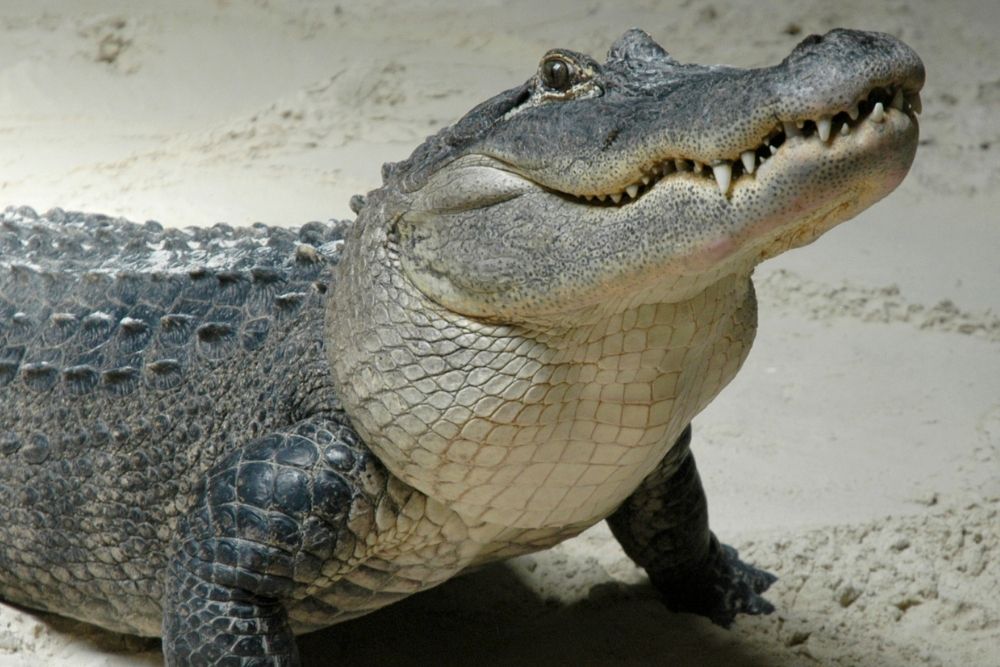
They Live All Around The World
Something that we often forget when we talk about crocodiles and their family, is just how many places they live in.
Crocodiles feel like animals that belong in the jungle, sitting in a river, waiting for some kind of animal or explorer to try and cross, so they can try and eat them.
And while that last part might be true, you’re just as likely to see them in Florida as you are in Africa and South America!
Because they’ve been around for so long, the crocodile family has found its way across the world, making a home for itself in almost any kind of environment, and almost any continent.
You’ll find alligators, caiman, and crocodiles in North and South America, crocodiles live in almost two-thirds of Africa, From Sudan to South Africa, and you’ll find them and Caimans dotted around South Asia, Oceania, and Australia. That’s a huge range for just one family of animals to have!
The only places you won’t find a member of the crocodile family are Antarctica and Europe, outside a zoo, of course.
They’re Great Swimmers
Outside their big size and scaly skin, the thing that crocodiles are best known for is their ability to swim. Their heads, floating just above the surface of the water, are iconic in pictures and photographs around the world.
The way that crocodiles swim is quite different from a lot of other animals that have taken to the water, like dolphins and manatees.
Instead of their backs and their tails flexing up and down, as you might find in most mammals that live in the water, their back ends move from side to side, with their tails flexing to give them some extra push. This is closer to how amphibians with tails, such as newts and salamanders, swim.
Although they are usually quite slow swimmers, this way of moving does allow them to have a sudden burst of speed when they need it, such as when they are trying to catch their prey or get away from danger. The Nile and Saltwater crocodiles, for example, can reach speeds of up to 17 kilometers an hour.
Now that might sound slow on paper, but when you consider that the average running speed that humans can reach is only 13 kilometers per hour, the fact that an animal that spends most of the time in the water can potentially outrun you is a pretty terrifying thought.
This is just one of the reasons you are supposed to stay far away from these animals if you find them in the wild. Perhaps unsurprisingly, and rather disturbingly, Saltwater and Nile crocodiles are also the species of crocodiles with the most human fatalities on record for reptiles.
They’ve Got A Crazy Family Tree
So, as we talked about earlier, crocodiles and their relatives started to evolve into the scaly beasts we know today around the late cretaceous, about 100 million years ago.
But, like so much of the web of natural life on our planet, their ancestors didn’t start out in the late cretaceous. They’re even older than that. Much older than that.
How far back in time would you say that animals that we would recognize as crocodiles first started appearing in our world? 150 million years ago? 200 million years, even?
Whatever the answer in your head was, unless it was 240 million years ago, you’ve got it wrong!
The ancestors of crocodiles started the evolutionary ball rolling at the same time that many of the earliest dinosaurs started to find their feet. The only group of reptiles with an older family tree are lizards, which are as old as the first reptiles themselves!
What’s even weirder about Crocodile’s ancestors though, is how strange they would look to today’s crocs and alligators. Some stood on straight legs, able to run at high speeds for long distances.
Others even lived, stood, and ran on just 2 legs. If you had seen one of these beasts, you probably would have thought it was a dinosaur, hopped back in your time machine, and gone home.
Perhaps we should be thankful that crocodiles have stuck to the water’s edge for so long, rather than try and run us down like a wolf or lion.
Funnily enough, the ancestors of crocodiles being around at the same time as the early dinosaurs aren’t just a happy coincidence. They actually share a common family ancestor, which paleontologists have guessed probably lived about 15 to 20 million years before that.
Meaning that Crocodiles are the closest living reptile relatives to the T-Rex that we have today.
But wait, it gets weirder.
Because birds are considered to be directly descended from some dinosaurs, this means that the closest relatives of birds alive today are also crocodiles!
Have you ever looked at a pigeon and a Nile crocodile, and thought they looked related?
If you do, then you probably have sharper eyes than us! But still, it’s amazing to see how life on Earth can be related, but look so different from each other.
Conclusion
So, it’s safe to say that the crocodile is an incredible animal. There’s nothing in the animal kingdom quite like them. They come in all shapes and sizes. They have a history that goes back further than most animals alive today.
They’ve got a family tree that’s full of some of the craziest creatures in prehistory, and they swim faster than most people can run! Not to mention that they’re all over the place!
So, next time someone asks you, ‘What’s your favorite animal?’, You’ll have all the info you’ll need to show why, out of nature’s strange and superbly weird creatures, the crocodile stands above the rest!

